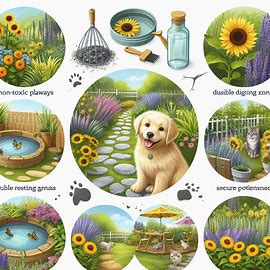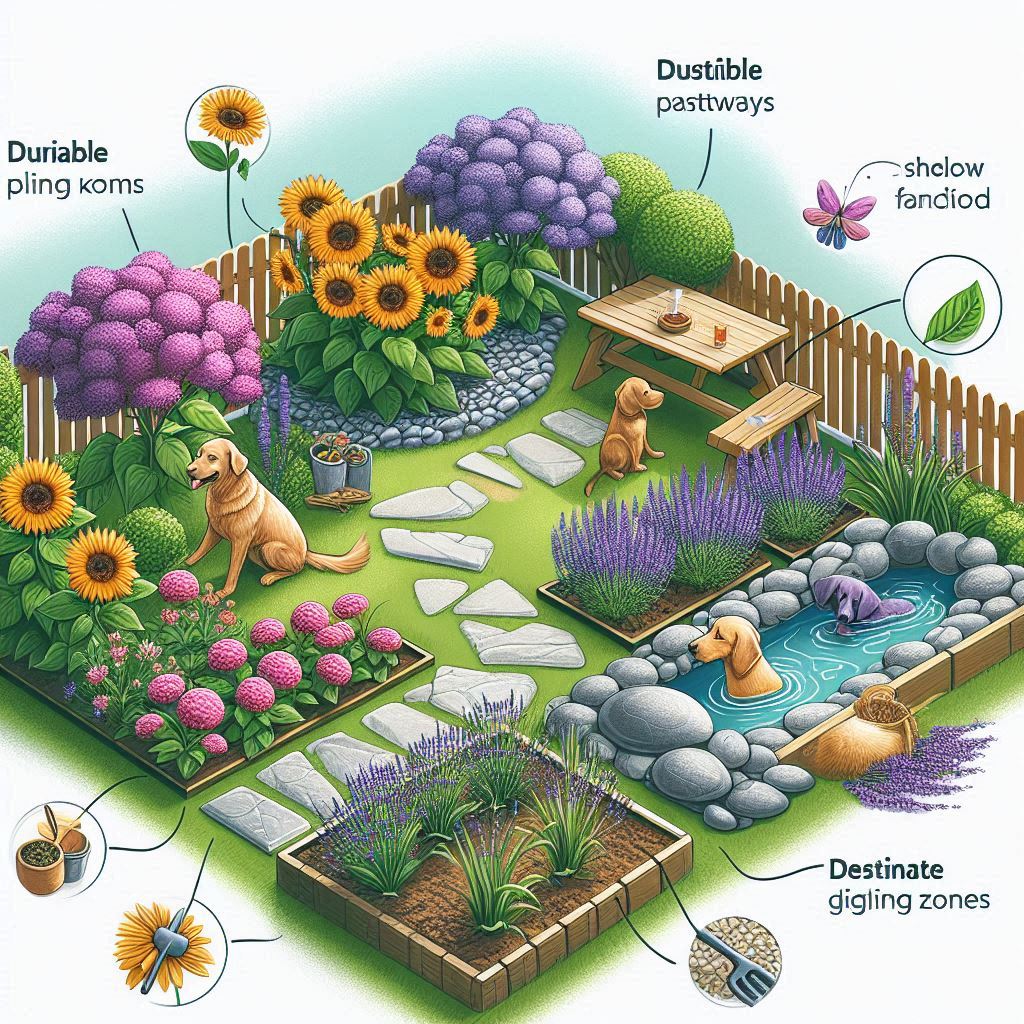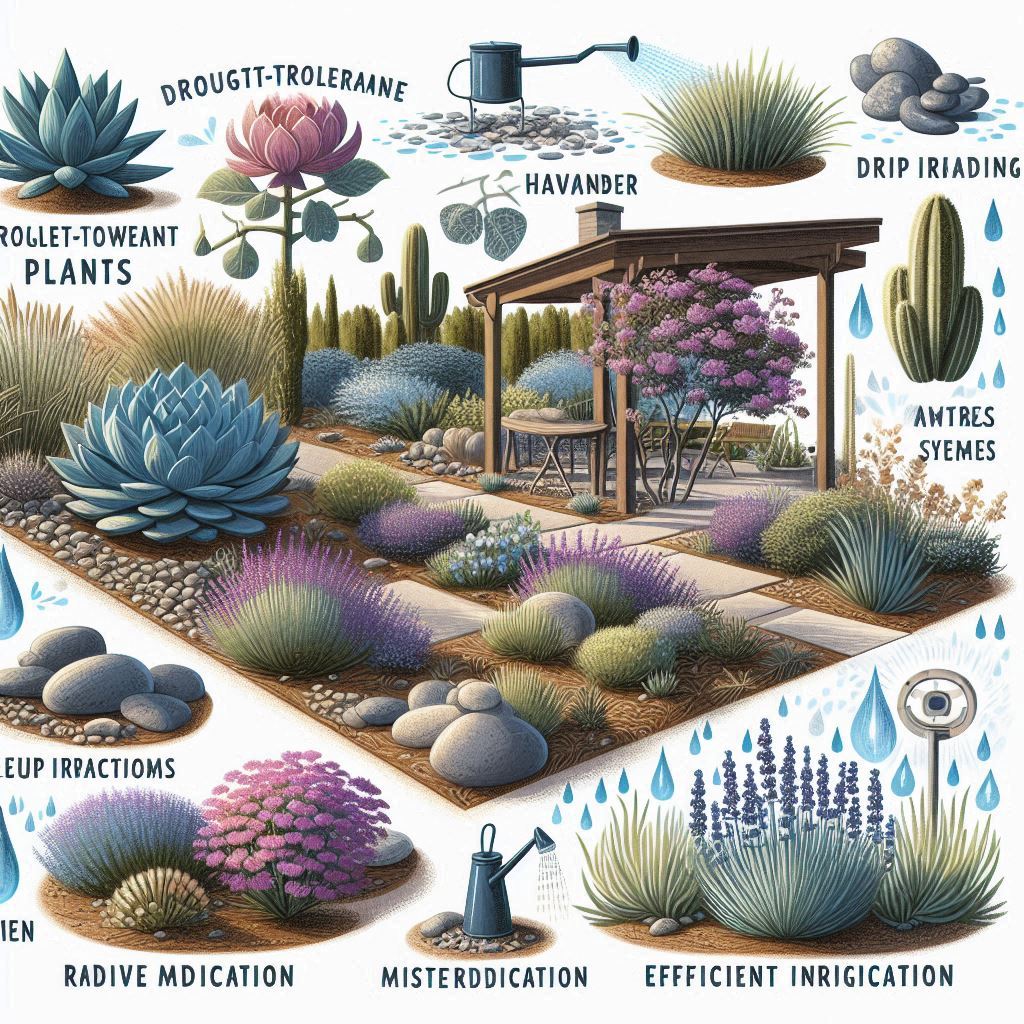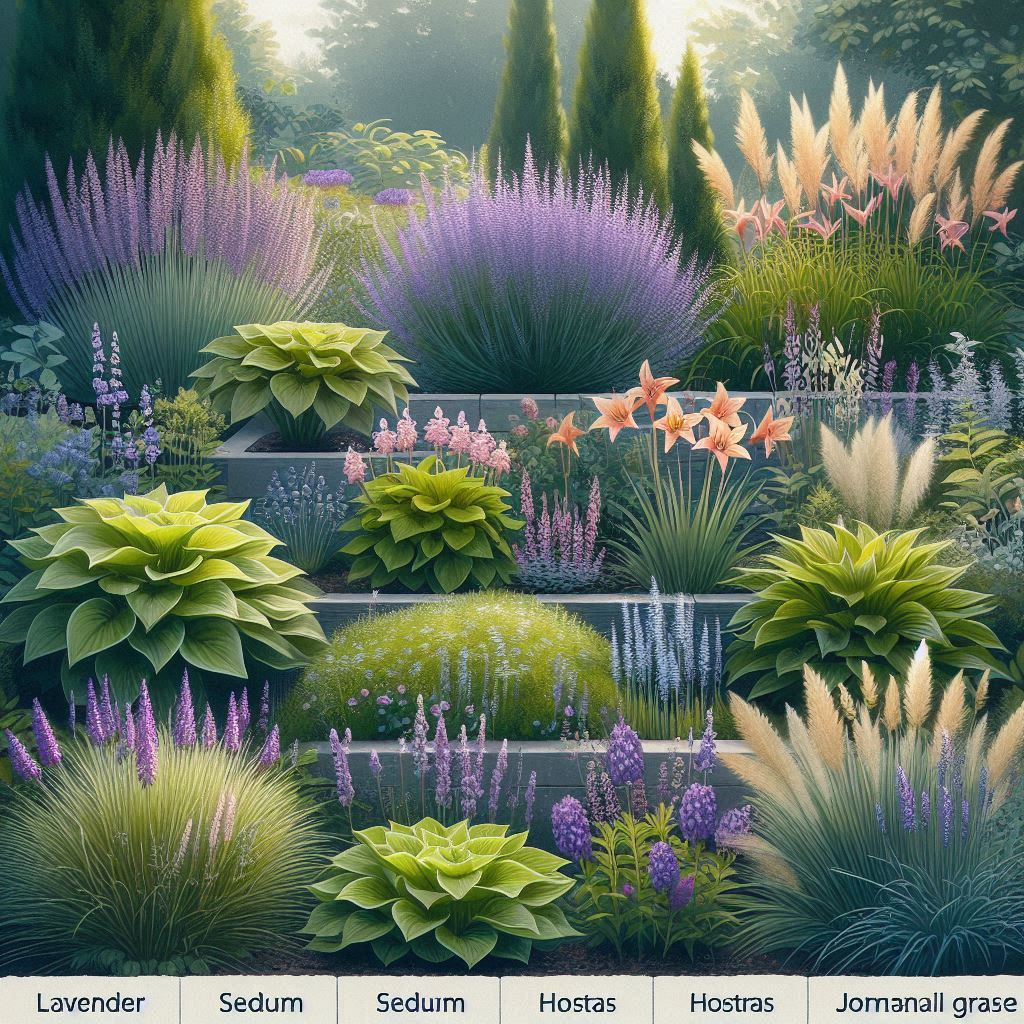Creating a garden that’s not only beautiful but also safe for your pets is essential for pet owners who want to enjoy their outdoor space without worry. Pets love to explore, dig, and sometimes even nibble on plants, so it’s crucial to design a garden that keeps them safe while still providing a lush, green environment. In this article, we’ll explore tips for designing a pet-friendly garden, including selecting safe plants, creating durable pathways, and incorporating pet-friendly features.
1. Choosing Safe Plants: Avoiding Toxic Varieties
One of the most important aspects of designing a pet-friendly garden is choosing plants that are non-toxic to your pets. Some common garden plants can be harmful if ingested by dogs or cats, so it’s essential to know which ones to avoid.
- Toxic Plants to Avoid: Some common toxic plants include lilies, azaleas, daffodils, and oleander. These can cause a range of health issues in pets, from mild irritation to severe poisoning.
- Pet-Safe Alternatives: Instead of toxic plants, opt for pet-safe alternatives like marigolds, sunflowers, and snapdragons. Herbs like basil, rosemary, and thyme are also safe and add fragrance and utility to your garden.
- Research and Labeling: Before planting, research the safety of each plant. Label plants in your garden with their names and whether they’re safe or toxic to help others who may visit your garden.
2. Designing Durable Pathways: Protecting Plants from Pet Traffic
Pets, especially dogs, love to run and play in the garden, which can lead to trampled plants and worn-out pathways. Designing durable pathways and protecting vulnerable plants can help maintain the beauty of your garden while accommodating your pets’ playful nature.
- Hardscaping Paths: Create designated pathways using materials like stone, gravel, or brick. These durable surfaces can withstand heavy traffic and prevent pets from damaging your plants.
- Barrier Plants: Use sturdy, low-growing plants like boxwood or lavender along the edges of pathways to create a natural barrier that guides pets away from more delicate plants.
- Mulching: Use pet-safe mulch like cedar or pine to cover garden beds and pathways. Avoid cocoa mulch, which can be toxic to dogs.
3. Creating a Pet-Friendly Landscape: Features for Fun and Safety
A pet-friendly garden isn’t just about safety; it’s also about creating a space where your pets can have fun and relax. Consider incorporating features that cater to your pets’ needs while enhancing the overall design of your garden.
- Shady Spots: Provide shaded areas where your pets can rest on hot days. Plant trees or install pergolas to create cool, shaded retreats.
- Digging Zones: If your dog loves to dig, designate a specific area of your garden for this activity. Fill it with loose soil or sand and encourage your dog to dig there rather than in your flower beds.
- Water Features: Install a pet-friendly water feature like a shallow pond or fountain where your pets can drink and play. Ensure the water is clean and refreshed regularly.
- Pet-Safe Fencing: Secure your garden with pet-safe fencing to keep your pets from wandering off. Choose fences that are tall enough to prevent jumping and ensure there are no gaps where pets can escape.

4. Preventing Pests and Using Pet-Safe Products
Pest control is a common concern in gardens, but many pesticides and herbicides can be harmful to pets. When designing a pet-friendly garden, it’s important to use pet-safe products and natural pest control methods.
- Natural Pest Control: Use natural methods like neem oil, diatomaceous earth, or companion planting to deter pests without harming your pets. For example, planting marigolds can help repel certain insects.
- Pet-Safe Fertilizers: Choose organic fertilizers that are safe for pets, avoiding products with harmful chemicals. Compost is a great natural alternative that enriches the soil without posing a risk to pets.
- Avoid Slug Bait: Traditional slug bait can be deadly to pets if ingested. Instead, use pet-safe alternatives like copper tape or diatomaceous earth to deter slugs and snails.
5. Maintaining Your Pet-Friendly Garden: Regular Checks and Adjustments
Once your pet-friendly garden is established, it’s important to maintain it with regular checks and adjustments to ensure it continues to be a safe and enjoyable space for your pets.
- Regular Inspections: Regularly inspect your garden for any hazards, such as sharp objects, toxic plants, or holes in fences. Address any issues immediately to keep your pets safe.
- Pruning and Weeding: Keep your garden tidy by regularly pruning plants and weeding beds. This not only keeps the garden looking neat but also reduces the risk of your pets coming into contact with harmful plants.
- Monitor Behavior: Pay attention to how your pets interact with the garden. If you notice they’re particularly interested in a certain plant, check to ensure it’s safe. If they’re digging in unwanted areas, consider reinforcing barriers or adding more distractions like toys.
Conclusion
Designing a pet-friendly garden doesn’t mean you have to compromise on beauty or functionality. By choosing safe plants, creating durable pathways, and incorporating pet-friendly features, you can create a garden that’s both a safe haven for your pets and a stunning outdoor retreat for you. With a little planning and regular maintenance, your garden can be a space where both you and your pets can thrive.



